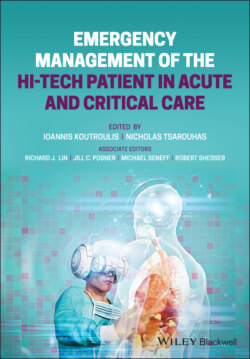Читать книгу Emergency Management of the Hi-Tech Patient in Acute and Critical Care - Группа авторов - Страница 49
Early Stomal Complications
ОглавлениеStomal necrosis can be seen in up to 14% of cases, most often in the immediate postoperative period. It is usually due to venous congestion or arterial insufficiency. If the necrosis involves only the superficial few millimeters of the stoma, then observation will usually be successful; however, if it extends deep to the fascial planes, then an urgent revision is warranted. The ED physician can determine the extent of necrosis by inserting a lubricated test tube in the stoma and with a flashlight or using a lighted anoscope.
Major bleeding from the stoma is uncommon. Minor bleeding can be from the initial surgery or over from vigorous stomal cleansing. Pressure, handheld cautery, or silver nitrate is usually sufficient to manage minor bleeding episodes. Topical hemostatic agents are sometimes helpful adjuncts. Finally, a well‐placed figure‐of‐eight stitch of monofilament suture on a noncutting needle can stop bleeding from an isolated bleeding vessel on the surface of the stoma, which is insensate.
Stomal retraction is defined as any stoma that is 0.5 cm or more below the skin surface, is noticed within six weeks of stoma formation, and requires surgical intervention. It can occur from excessive tension on the bowel and occurs more often with ileostomies and in obese patients. Stomal retraction can cause leakage, difficulty with pouch adherence, and skin irritation. Supportive care includes using a convex pouching system and belt and binder; however, many require revision.
